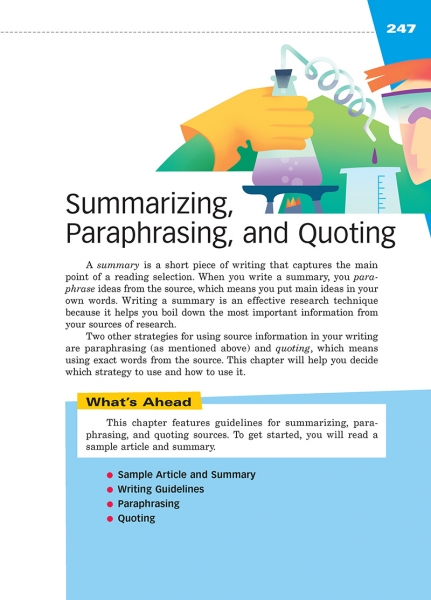Page 247 from

Start-Up Activity
Ask whether any students like coffee and how they like it: cream and sugar, black, iced? Ask them if they've ever had an espresso. Let anyone who says, "yes" describe the espresso or tell a story about drinking it. Ask why the espresso costs as much as a regular coffee but is so much smaller. Someone will probably point out that it is like a regular coffee, just distilled into a tiny cup.
Tell your students they are about to learn the art of distilling big ideas into a single paragraph. The effect should be about the same as an espresso. Readers should feel the jolt of getting a lot of key information in one small package.
Think About It
“I like coffee because it gives me the illusion that I might be awake.”
—Lewis Black

Start-Up Activity
Ask whether any students like coffee and how they like it: cream and sugar, black, iced? Ask them if they've ever had an espresso. Let anyone who says, "yes" describe the espresso or tell a story about drinking it. Ask why the espresso costs as much as a regular coffee but is so much smaller. Someone will probably point out that it is like a regular coffee, just distilled into a tiny cup.
Tell your students they are about to learn the art of distilling big ideas into a single paragraph. The effect should be about the same as an espresso. Readers should feel the jolt of getting a lot of key information in one small package.
Think About It
“I like coffee because it gives me the illusion that I might be awake.”
—Lewis Black